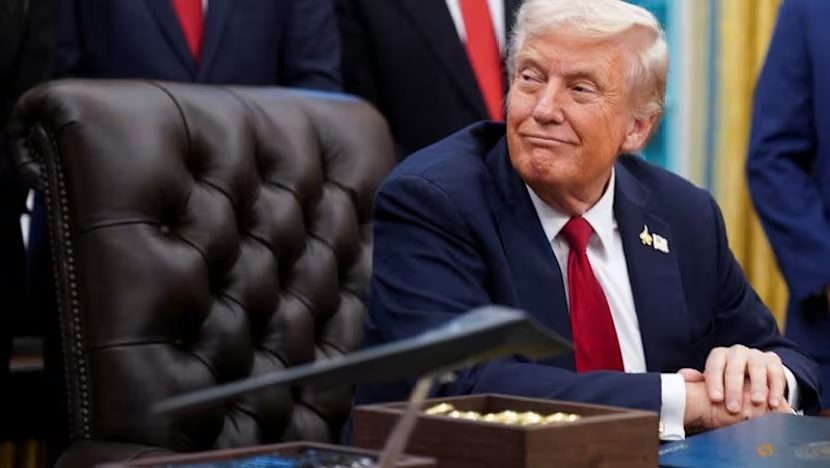A midnight silence in Washington As the clock struck 12:01 a.m. on October 1, 2025, Washington fell into a strange, tense silence. The lights inside government buildings still glowed, but phones began ringing with furlough notices, and millions of federal workers braced themselves for a reality they’ve lived before: a government shutdown. To the average
A midnight silence in Washington
As the clock struck 12:01 a.m. on October 1, 2025, Washington fell into a strange, tense silence. The lights inside government buildings still glowed, but phones began ringing with furlough notices, and millions of federal workers braced themselves for a reality they’ve lived before: a government shutdown.
To the average American, “shutdown” sounds dramatic and it is. It means paychecks delayed for park rangers and researchers, security lines stretched as air traffic controllers work without pay, passport applications piling up, and markets jittering as regulators walk out the door. It is the United States pressing pause on itself, not because it cannot pay its bills, but because its leaders cannot agree on how to fund them. The cause was not a lack of money the U.S. economy remains vast and powerful but a lack of consensus. Congress is required each year to pass appropriations bills or at least a temporary “continuing resolution” (CR) to keep agencies running. This year, as September bled into October, two competing proposals stood in the Senate. Both measures failed on the Senate floor, neither side willing to budge, and the deadline passed. Legally, the Antideficiency Act forced agencies to halt non-essential spending, triggering the shutdown.
Republican leaders pushed for a stop-gap measure to fund the government until late November, but without concessions Democrats sought.
Democrats, for their part, tied their proposal to protections for healthcare subsidies and a handful of other social priorities.

Who is affected and how
Not all of government goes dark. Essential services continue: troops stand watch, air traffic controllers guide planes, federal law enforcement pursues cases. But much else slows or stops:
- National Parks and museums: Gates close, visitors turned away. In past shutdowns, shuttered parks cost local communities millions in lost tourism.
- Regulators: At the Securities and Exchange Commission, thousands were furloughed, leaving only a skeleton crew. IPOs, corporate filings, and enforcement actions stall. Wall Street notices quickly.
- Science and research: Federal labs pause experiments mid-stream, grant disbursements freeze, projects grind to a halt. Progress in medicine, energy, and space science is delayed not by lack of discovery but by politics.
- Everyday services: Passports, small business loans, some veterans’ programs all slowed or stopped. Millions of families are left waiting.
And then there are the federal employees themselves: rangers, clerks, researchers, janitors, analysts. Some are furloughed at home, others work without pay until back-pay legislation passes later. For families living paycheck to paycheck, the uncertainty is crushing.
The economic ripples
Every shutdown carries a price tag. The longer it lasts, the steeper the cost. Economists warn of slowed growth, jittery markets, and reduced consumer confidence. Small businesses that rely on federal contracts face delays in payment; restaurants near federal buildings see fewer customers; even local grocery stores feel the pinch as government families tighten budgets. Financial markets react too. With SEC oversight reduced, risk increases. Investors turn cautious. For ordinary Americans saving for retirement, these are not abstract headlines they can mean shifts in 401(k) balances, postponed investments, and more volatility in the months ahead.
A look back: why shutdowns keep happening
This is the 15th shutdown since 1981, a pattern that has become familiar in the modern era. Each shutdown is born of the same mechanics: appropriations fail to pass, politics trumps compromise. But in today’s climate of polarization, shutdowns have become bargaining chips. Past shutdowns have lasted from a single day to more than a month the record being the 35-day partial shutdown in 2018-2019. Each time, public trust in Congress erodes further, and families on the ground pay the price for a battle they didn’t choose. That is the question on everyone’s mind. It could be short: a matter of days, if leaders cobble together a temporary deal. Or it could stretch for weeks, even months, if neither side blinks. Courts currently have reserve funds through October 17, but after that, even the judiciary begins to curtail. Federal workers know this dance all too well: the “wait and see,” the wondering when paychecks will return.
Behind closed doors, bargaining begins again. Party leaders huddle in the Capitol, trading demands: funding levels, policy riders, healthcare subsidies, spending trims. The White House signals where the President will or will not compromise. House and Senate leaders test the waters for new votes. Unions prepare lawsuits to protect workers. Agencies update shutdown contingency plans daily, informing Americans which services are open and which are closed. On the outside, citizens watch with frustration, wondering how the most powerful government on earth can lock its own doors over political stalemates.

Beyond politics and economics are the human stories:
- A park ranger in Wyoming sending texts to visitors to cancel fall tours.
- A researcher in Maryland, mid-experiment, forced to turn off machines and walk away.
- An air traffic controller in Chicago, guiding planes safely yet knowing the paycheck may not come.
- A federal contractor’s family in Virginia, calculating how many weeks of groceries the savings account can stretch.
These lives are the true cost of shutdowns measured not in trillions, but in nights without sleep, bills unpaid, and dreams postponed.
In the coming days, all eyes will be on the Capitol. If lawmakers schedule new votes quickly, that signals potential compromise. If days pass without movement, prepare for a longer standoff. Watch also for ripple effects: closed parks and museums, longer airport waits, stock market swings, and louder frustration from federal workers and citizens. The pressure grows with each passing day, and in Washington, pressure often dictates timing.
a nation waiting on itself
Shutdowns are both a symptom and a symbol a symptom of gridlock, a symbol of politics overpowering governance. They remind us how fragile our budgeting process has become. Yet they also spotlight the resilience of the American people: workers who show up even without pay, communities that support one another, families who endure uncertainty. America has weathered shutdowns before, and it will again. But each one leaves scars on trust, on institutions, on those who serve quietly behind the headlines. For now, the government is on pause. The real question is how quickly leaders will press play again, and whether the nation’s lawmakers can find common ground before the costs human and economic grow too heavy to bear.

















Leave a Comment
Your email address will not be published. Required fields are marked with *